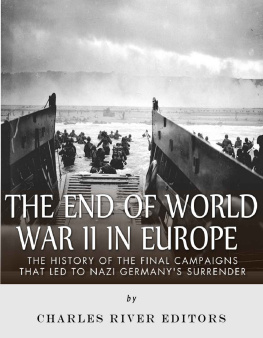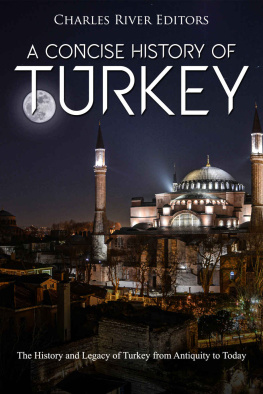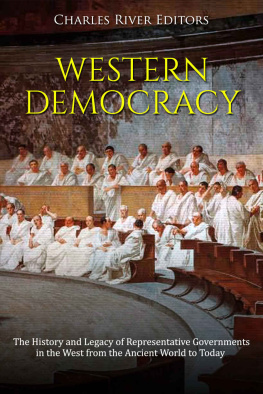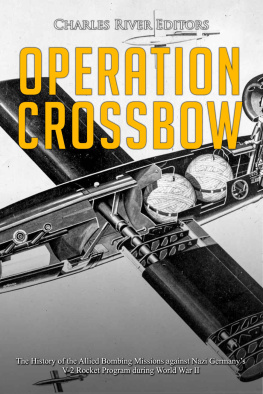Charles River Editors - East Germany: The History and Legacy of the Soviet Satellite State Established after World War II
Here you can read online Charles River Editors - East Germany: The History and Legacy of the Soviet Satellite State Established after World War II full text of the book (entire story) in english for free. Download pdf and epub, get meaning, cover and reviews about this ebook. year: 2017, publisher: Charles River Editors, genre: Politics. Description of the work, (preface) as well as reviews are available. Best literature library LitArk.com created for fans of good reading and offers a wide selection of genres:
Romance novel
Science fiction
Adventure
Detective
Science
History
Home and family
Prose
Art
Politics
Computer
Non-fiction
Religion
Business
Children
Humor
Choose a favorite category and find really read worthwhile books. Enjoy immersion in the world of imagination, feel the emotions of the characters or learn something new for yourself, make an fascinating discovery.

- Book:East Germany: The History and Legacy of the Soviet Satellite State Established after World War II
- Author:
- Publisher:Charles River Editors
- Genre:
- Year:2017
- Rating:4 / 5
- Favourites:Add to favourites
- Your mark:
- 80
- 1
- 2
- 3
- 4
- 5
East Germany: The History and Legacy of the Soviet Satellite State Established after World War II: summary, description and annotation
We offer to read an annotation, description, summary or preface (depends on what the author of the book "East Germany: The History and Legacy of the Soviet Satellite State Established after World War II" wrote himself). If you haven't found the necessary information about the book — write in the comments, we will try to find it.
East Germany: The History and Legacy of the Soviet Satellite State Established after World War II — read online for free the complete book (whole text) full work
Below is the text of the book, divided by pages. System saving the place of the last page read, allows you to conveniently read the book "East Germany: The History and Legacy of the Soviet Satellite State Established after World War II" online for free, without having to search again every time where you left off. Put a bookmark, and you can go to the page where you finished reading at any time.
Font size:
Interval:
Bookmark:
By Charles River Editors

Edward Valachovics picture of the Berlin Wall in 1975

Charles River Editors is a boutique digital publishing company, specializing in bringing history back to life with educational and engaging books on a wide range of topics. Keep up to date with our new and free offerings with this 5 second sign up on our weekly mailing list , and visit Our Kindle Author Page to see other recently published Kindle titles.
We make these books for you and always want to know our readers opinions, so we encourage you to leave reviews and look forward to publishing new and exciting titles each week.

A picture of East German workers building the Berlin Wall
East Germany
From Stettin in the Baltic to Trieste in the Adriatic an Iron Curtain has descended across the continent. Behind that line lie all the capitals of the ancient states of Central Europe and Eastern Europe. Warsaw, Berlin, Prague, Vienna, Budapest, Belgrade, Bucharest and Sofia; all these famous cities and the populations around them lie in what I must call the Soviet sphere, and all are subject, in one form or another, not only to Soviet influence but to a very high and in some cases increasing measure of control from Moscow. Winston Churchill, 1946
Here in Berlin, one cannot help being aware that you are the hub around which turns the wheel of history.... If ever there were a people who should be constantly sensitive to their destiny, the people of Berlin, East and West, should be they. - Martin Luther King, Jr.
In the wake of World War II, the European continent was devastated, and the conflict left the Soviet Union and the United States as uncontested superpowers. This ushered in over 45 years of the Cold War, and a political alignment of Western democracies against the Communist Soviet bloc that produced conflicts pitting allies on each sides fighting, even as the American and Soviet militaries never engaged each other.
Though it never got hot, the Cold War was a tense era until the dissolution of the USSR, and nothing symbolized the split more than the Berlin Wall, which literally divided the city. Berlin had been a flashpoint even before World War II ended, and the city was occupied by the different Allies even as the close of the war turned them into adversaries. After the Soviets blockade of West Berlin was prevented by the Berlin Airlift, the Eastern Bloc and the Western powers continued to control different sections of the city, and by the 1960s, East Germany was pushing for a solution to the problem of an enclave of freedom within its borders. West Berlin was a haven for highly-educated East Germans who wanted freedom and a better life in the West, and this brain drain was threatening the survival of the East German economy.
In order to stop this, access to the West through West Berlin had to be cut off, so in August 1961, Soviet premier Nikita Khrushchev authorized East German leader Walter Ulbricht to begin construction of what would become known as the Berlin Wall. The wall, begun on Sunday August 13, would eventually surround the city, in spite of global condemnation, and the Berlin Wall itself would become the symbol for Communist repression in the Eastern Bloc. It also ended Khrushchevs attempts to conclude a peace treaty among the Four Powers (the Soviets, the Americans, the United Kingdom, and France) and the two German states.
The wall would serve as a perfect photo-opportunity for two presidents (Kennedy and Reagan) to hammer the Soviet Communists and their repression, but the Berlin Wall would stand for nearly 30 years, isolating the East from the West. It is estimated about 200 people would die trying to cross the wall to defect to the West.
Things came to a head in 1989. With rapid change throughout Europe, the wall faced a challenge it could not contain, the challenge of democracys spread. On the night of November 9, 1989, the Berlin Wall was effectively removed from the midst of the city it so long divided removed with pick axes and sledgehammers, but also removed from the hearts and minds of the people on both sides who only hours before had thought the walls existence insurmountable. As one writer put it, No border guard, no wall, can forever shield repressive regimes from the power of subversive ideas, from the lure of freedom.
Of course, the Berlin Wall also literally divided West Germany from East Germany. Until the unification of the country again in 1990, East Germany was predicated on, fueled by, and in the end, contingent on, the superpowers rivalry. The history of East Germany was a remarkable one, from its chaotic origins through its ossification as a Stalinist regime, until the country collapsed along with the Berlin Wall. And in many ways, the legacy of East Germany is still around today; not only is Germany still marked by the division, but in some respects, the old frontier still represents different expectations, social conditions, and worldviews.
East Germany: The History and Legacy of the Soviet Satellite State Established after World War II examines the controversial country and its place in the Cold War. Along with pictures and a bibliography, you will learn about East Germany like never before.
The events that led to the construction of the Berlin Wall began 20 years earlier during World War II. As the Soviets turned the tide against the Nazi invasion of Russia, they were able to begin advancing west toward Germany themselves, but the Soviet armies would pay dearly for the advances they made on Germany after Hitlers invasion of Russia ended in failure: According to the Soviet Unions estimates, the Red Armys losses in the war totaled more than 11 million troops, over 100,000 aircraft, more than 300,000 artillery pieces, and 100,000 tanks and self-propelled guns.
Meanwhile, Germanys losses were mounting, and the Soviet armies were on the rebound, with an advantage of almost 5:1 over Germany in manpower, as well as superiority in tanks, aircraft, and artillery. Even with these major advantages, however, the race to Berlin would inflict a heavier toll on Soviet armies than they had yet seen, and with Berlin itself heavily defended by 30 mile deep defenses in multiple directions, the Soviets would eventually suffer over 100,000 lives just taking the city, along with 350,000 other casualties.
In the months leading up to the Battle of Berlin, there was a strange division amongst the German people regarding their fate. While Hitler called for the remainder of Berlins population to take up arms and the most loyal responded to the call, many in Berlin were resigned to a seemingly inevitable defeat. In his study of Berlin in 1945, historian Antony Beevor described a city in which a grim humor had come to replace once hopeful and proud demeanors. Though humor was certainly an attempt at levity in the face of serious concerns, Germans nevertheless joked about the soon-to-arrive Russians, referring to LSR (Luftschutzraum air-raid shelters) as actually standing for Lernt scnhell Russich (Learn Russian quickly). In the air raid shelters, Berliners regularly found themselves in crowded conditions, waiting out the bombing raids that were taking place on a regular basis in 1944. In a city of 3 million, Beevor explained how a tightly-packed and unsanitary atmosphere became an expected part of life in Berlin. By the years end, much of the citys beauty and a great deal of its functionality had been destroyed.
Font size:
Interval:
Bookmark:
Similar books «East Germany: The History and Legacy of the Soviet Satellite State Established after World War II»
Look at similar books to East Germany: The History and Legacy of the Soviet Satellite State Established after World War II. We have selected literature similar in name and meaning in the hope of providing readers with more options to find new, interesting, not yet read works.
Discussion, reviews of the book East Germany: The History and Legacy of the Soviet Satellite State Established after World War II and just readers' own opinions. Leave your comments, write what you think about the work, its meaning or the main characters. Specify what exactly you liked and what you didn't like, and why you think so.

















